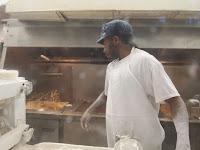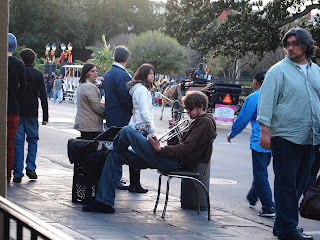If you have been even the slightest bit plugged into the news these past few days, it is a safe bet that you've heard of
The Hunger Games, the ticket sales juggernaut that swept across multiplexes this past weekend. The first in the trilogy was published in late 2009 and the last one late last year. The books are classified as Young Adult Fiction (typically targeted at readers between the ages of 12 and 18).
Discussions surrounding the movie and the books have branched off into hundreds of little tentacles on the Internet and among friends. Everything from whether Jennifer Lawrence
is too big to portray Katniss Everdeen, the heroine, to the
appropriateness of the casting of the other parts, to how the movie differed from the books, and a lively discussion on the New York Times
website about whether adults should be reading novels written for their children.
Among some parents (the ones who are not fighting for the books with their children, that is) there is also a general unease about whether the books are appropriate for children at the lower end of the age range targeted by Young Adult novelists. The books make no bones about the violence contained within their pages. The back flap to the first in the series reads, "Winning means fame and fortune. Losing means certain death. The Hunger Games have begun..." And no matter how you slice it, between 12 and 18 lies a huge difference not only in terms of physical growth but also in terms of emotional growth, social maturity, willingness to process and understand goings on in the world around us, and general ability to engage with more than self, family and friends.
There is no shortage of mature matter tackled in
The Hunger Games. There is war, a rebellion of the states against their Capitol; there is deprivation and there are deeds of cruelty perpetrated by a government against its own citizens, young, old, sick and dying; there is torture and there are biological weapons; there is the harsh life of mining communities accompanied by the inevitable accidents leading to death and mayhem; there is bullying and peer pressure; there are absent fathers (because they are dead) and disengaged mothers; there are children who have had to grow up and take on adult responsibilities because there is no one else around who will take care of them (this characteristic is the premise of most novels in the Young Adult genre); then there is the hunger and the promise of riches and unending food supply if only you, a child yourself, would fight 23 other kids to the death; and the ignominy of having to do engage in the games for the pleasure and enjoyment of people of the Capitol who have not known a day's hardship in their lives.
Every page brings home the realization that in Panem, life is hard and life is unfair and unfair not in the way life is to a vain teenager when a zit makes an unwelcome appearance before a party.
But for anyone who has doubts if their fourth or fifth grader should be reading these books, I say
The Hunger Games is but a reflection of what they see around them in newspapers, on television and radio, and unfortunately, to some extent in their own schools every day. The books represent an amazing opportunity to think about those issues beyond the headlines.
You know your child best of course and their capacity to process highly evocative material, but if he or she follows the goings on in the world, it will not take long for them to draw parallels between what they are reading in the books and the ticker on the bottom of their television screens - the Arab uprisings and the brutal quelling, the peer pressure children face in school, the emotional toll of cliques, the wars and divorces that have taken fathers and mothers away from their children, the crushing poverty not only in large parts of the world, but in America too, and the harsh lives of child soldiers of Africa and Latin America who kill each other for the promise of food and a better life for their families.
The bone-chilling truth is that while we debate about whether our children should read such stories and try to protect them from this knowledge, there are human beings all over the world who are living the lives of abject poverty so richly detailed in
The Hunger Games series.
The Hunger Games also offers a rather long and eye-opening peek behind the scenes of reality television shows.
It was a long time ago, but I still clearly remember the first time I learned that advertising firms used mashed potatoes as a stand-in for ice cream in ads. It was as if a veil had come off and I could clearly see that things were not as they appeared. And just as a word that you've newly learned suddenly seems to pop up everywhere, so too did evidence of gimmickry and sleight-of-hand in all sorts of advertisements.
These days, mashed potatoes that can withstand the glare of flood lights is the least of gimmickry that kids (and their parents) have to worry about. From teen magazines choosing to air brush away the slightest hint of baby fat to kids being constantly bombarded with messages about branding, food and self-image (such as kids being sold sugary foods while being held up to an impossible thinness standard), fact and fiction lead an uneasy co-existence in children's lives.
The games in the book series are organized as reality television and the machinations the producers resort to just to keep the ratings up and keep audience interest from flagging are painfully obvious. It can only help to educate kids in all the ways in which companies seek to manipulate them and hold their interest for gain.
So go ahead, let your tween read the books. But their understanding of the ideas will be infinitely richer if you read them as well and spare the time to discuss the various issues that I am sure will come up. In our household at least, both my son and I have been talking about the books and the movie giddily for the last few days.
~~~~
Also read: Suzanne Collins's
interview with the New York Times. It offers a revealing look at the forces in her own life that shaped the plot in
The Hunger Games.











